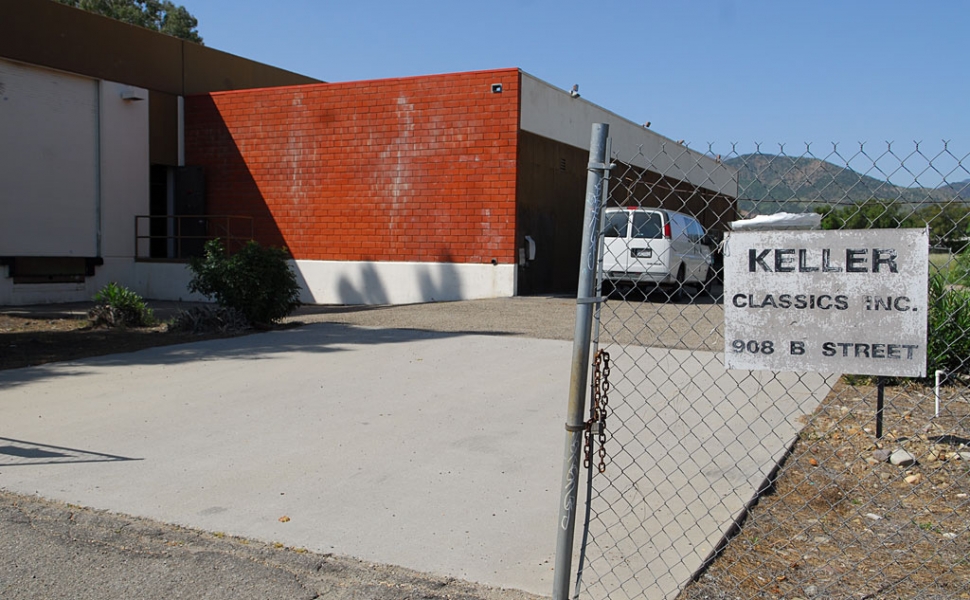|
Business Park Funding Takes Center Stage
 Property owned by Keller Classics was among five parcels forced into foreclosure due to Measure I. These north Fillmore properties have lost their value because Measure I has made it impossible for them to be developed. By Naomi Klimaszewska — Wednesday, March 24th, 2010
Artists Guild Boy Scouts and Boys & Girls Club Keeping Revenues Local Classification and Compensation Study Shellie Anderson of Bryce Consulting gave a presentation on the Classification and Compensation Study being conducted for the City of Fillmore. The study encompasses 46 full-time and 47 part-time positions in 54 classifications and will produce recommendations on staff alignments, reporting relationships, and organizational structure. A salary and benefit study including a market survey and a City salary/step plan will gauge consistency and help ensure the accuracy of job descriptions to better serve recruitment, selection, and career progression purposes. Fillmore Business Park The 112 acres under consideration is located in the southwest corner of the City of Fillmore and is bounded by Sespe Creek on the west, the Santa Clara River on the south, C Street on the east, and State Route 126 on the north. This area includes eight separate property owners, the Water Recycling Plant (12.5 acres), and Two Rivers Regional Park (22 acres), leaving 77.5 acres for commercial and light industrial land use in the Business Park. KDF believes that a public/private partnership between the City of Fillmore and the developers would “bring thousands of new jobs to Fillmore” and get the “local economy growing and help bring prosperity to the existing businesses and residents of Fillmore.” Councilmember Jamey Brooks’ immediate question was why the developers turned to the I-Bank loan and not directly to a bank. Quiring replied, “I prefer the developer answer that question.” Ray Harper of KDF stressed the 2,600 jobs that the Business Park would provide, and mentioned his recent efforts to speak directly to the council members to discuss the project in detail. Brooks acknowledged the invitation but cited his personal policy of detachment, though he “appreciates” that others met. Harper explained his situation as the developer, citing the Master Plan approved in March 2008 for which a Common Area Master Infrastructure Fee was developed to support the Business Park parcels, including the City’s Water Recycling Plant and Two Rivers Park. The formation of a Community Facilities District (CFD #8) was requested by KDF to include five separate projects within the Park representing approximately 64 acres. The Water Recycling Plant the Park were not proposed to be included as these projects would be paying for improvements through City-budged funds outside of a bond sale. KDF deposited $60,000 toward formation costs when the formation of CFD #8 began in January 2008, but formation efforts ceased in July 2009, when $8.1 million in infrastructure and development impact fees were being proposed for financing. Harper highlighted KDF’s having paid for additional projects not in the original plan and not having “gotten a single dollar back.” KDF turned to consultants at California Strategies, which advised that they go to Infrastructure Banking, as the situation was determined to be “almost tailor-made for I-Bank,” with banks not lending, especially in commercial real estate. Appealing to the prospect of 2,600 jobs the project would bring, bringing outside money into the community, Harper assuring the council that the plan is “not a risk to the city” and said that he was not asking to use the General Fund, but was asking the City to be a pass-through in light of the economic circumstances. Public Forum Mayor Patti Walker clarified that KDF would pay up to $15,000 for the City to hire a consultant, before asking Harper whether the landowners had been contacted. Harper replied that they hadn’t formally met for lack of concrete figures and analysis to discuss. He stated that the time frame for the analysis would be two or three months. Upon Mayor Walker’s question about the developer’s intentions of the repayment of $2.8 million, Harper answered that they were “looking at sources.” Councilmember Steve Conaway moved to pass the first recommendation to provide policy directions, expressing his interest in exploring other sources of funding. Brooks declared that he was “not willing to put any GF in jeopardy” in light of banks having gone under and in the absence of occupants. He stated that the project “shouldn’t be a matter of gambling” and it is “not a good financial practice for city councils to do.” Conaway redirected attention to the request explore other options, with Councilmember Laurie Hernandez calling it “irresponsible” not to put up the General Fund. Brooks exclaimed that to assume a guarantee of 2,600 jobs is “erroneous.” Mayor Pro-tem Gayle Washburn wanted to know of viable occupants, but appeared skeptical of the City’s qualification for monies in light of recent ineligibility for the Water Recycling Plant. Walker expressed her doubts of the feasibility of the project as in July, not one landowner wanted to join a CFD. She stated that the Business Park would be “a good addition to the community, but not at the risk of losing our General Fund.” Brooks reiterated that he doesn’t want “to waste staff time” and “doesn’t want us to hire anyone at this time.” Conaway countered that the proposal was for the developers to hire, at their expense, a consultant that the council thinks is qualified to ensure fairness. Brooks conceded that he would consider a vote for an analysis severed from any obligation of the City to put up the General Fund, but cited the absence of the developers as reason for his refusal to vote on any immediate motion. The Council voted to remain open to exploring other sources of funding and to consider a consultant at the expense of the developers. Quiring stated that they would contact the developers in the morning. |
